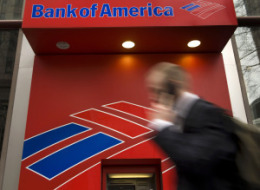First Posted: 11- 8-10 11:13 AM | Updated: 11- 8-10 12:18 PM
WASHINGTON -- You could do a lot worse things with your time than read every word of what William K. Black and L. Randall Wray have written for the Huffington Post in the last two weeks -- even though it would take a while.
Black and Wray both teach economics at the University of Missouri-Kansas City. Black, himself a regulator during the S&L scandal of the 1980s, has emerged as one of the most blistering critics of the Obama administration’s limp response to the mortgage and foreclosure crisis. For an introduction, read my article on Black and his list of called on the FDIC to put some of the nation's biggest banks into receivership, in order to clean house. “Foreclose on the foreclosure fraudsters,” they wrote -- and start with the worst: Bank of America.
I wrote a called for a foreclosure moratorium, and explained why the guilt gets greater the higher you go in the mortgage fraud food chain – not the other way around.
Black, writing alone, also corrected President Obama’s assertion during his interview with Jon Stewart, that chief economic adviser Larry Summers had done a “heckuva job.” Summers did not resolve the financial crisis, Black wrote, he just increase the total cost of the crisis in the long run, and he concluded that “the administration's banking policies have attained the terrible trifecta: terrible economics, terrible ethics, and terrible politics.”
After Bank of America executive Rebecca Mairone posted a took to their keyboards again and wrote about how “[t]he bank's response primarily criticizes its borrowers as deadbeats, yet the data it provides support points we have made in our prior posts.”
In her defense of BofA, Mairone noted that most of the bank’s problem loans were made by Countrywide Financial, which Bank of America acquired in January 2008 -- well after the toxicity of its mortgage holdings had made the company and its practices notorious. Mairone casts the action as a heroic one, staving off a failure that “would have been devastating to the economy, the markets, and millions of homeowners.” But Black and Wray argue that putting Countrywide into receivership would have been a much better option: “A receiver would have fired Countrywide's fraudulent senior leaders. Bank of America, by contrast, put them in leadership roles in major operations, including foreclosures, where they could commit continuing frauds.” And Bank of America called on Bank of America to come clean. And in that post, they raise some fascinating questions that all of us should be asking. Among them:
- How did you determine the losses in Countrywide's assets?
- How large were the market value losses at that time?
- How large are the market value losses now?
- Which members of the due diligence team were assigned to determine the incidence of fraud in various loan categories? What did they find?
- How large a sample of subprime and liar's loans did BofA's due diligence team review?
- What likely mortgage fraud incidence did BofA's due diligence team discover?
- What did they report to BofA with regard to fraud incidence?
- What changes in lending and personnel did BofA implement in response to these findings?
- What actions did BofA take in response to finding the incidence of mortgage and accounting/securities fraud?

